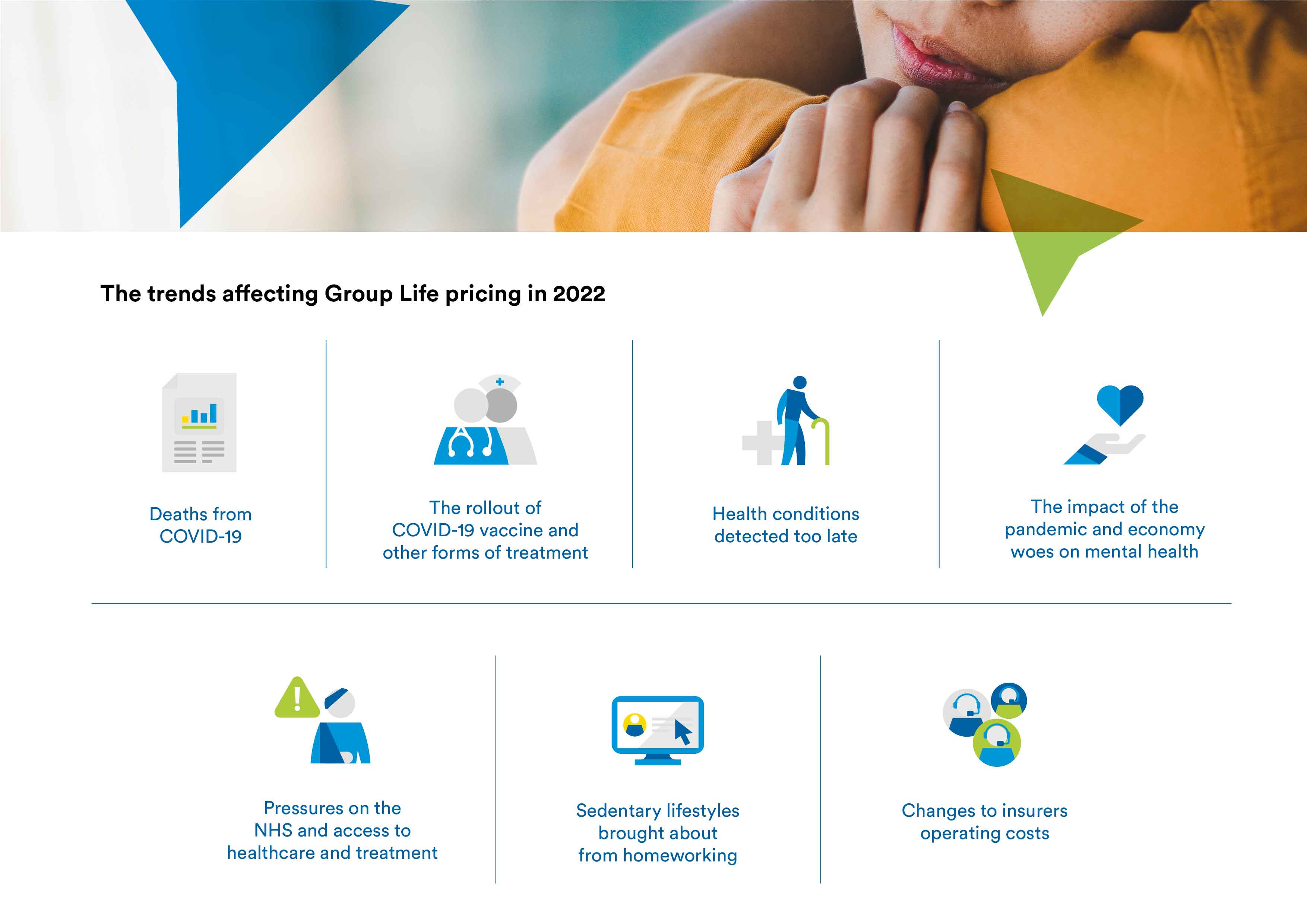Group life pricing is influenced by many factors, from the emergence of new risks through to changes in lifestyle and behaviours. As a life insurer, to price accurately we must carefully monitor and understand all of the risks that affect mortality.
Until 2020, the situation was fairly benign. Life expectancy had been ticking up gently for many years as a result of improvements in medical science and living standards and was beginning to plateau due to factors such as fast-food consumption and sedentary lifestyles.
This all changed with the arrival of COVID-19. A new source of mortality, with no historical data and plenty of unknowns, its influence rippled out across many areas of risk.
Subsequently, there is a very different set of influences which group life insurers must consider when determining mortality and pricing.
With that in mind, here are 7 trends that we’ve seen that are impacting and will impact group life pricing now and in the future.
1. COVID-19 deaths
Group life insurance is directly affected by deaths from COVID-19. Figures from Group Risk Development (GRiD) show that £168.3m was paid out by group life insurers in 2021 for COVID-19 claims – up from £93m in 2020.
During the early phases of the pandemic, the group life industry looked to add in risk differentials by industry. This considered factors such as whether employees were public facing or working from home as this affected infection rate.
2. COVID-19 vaccine rollout and treatment
Initial concerns around COVID-19 have reduced as the vaccine rollout and improvements in treatment are successfully reducing mortality. As at 1st June 2022, more than 143m vaccinations had been administered in the UK, with over 39m people having had at least three doses.
However, the situation remains dynamic. A new variant or changes in government policy could affect COVID-19 mortality.
3. Late detection of health conditions
The pandemic forced the NHS to shift resources away from other areas of healthcare so it could treat COVID-19 patients. For example, in June 2020, Cancer Research UK estimated that around 2.4m people were waiting for cancer screening, further tests or cancer treatment and even in May 2022, it found that more than 65,000 people are waiting more than 28 days to find out if they have cancer . As a later diagnosis can mean a worse prognosis, there are implications for group life pricing.
4. More mental health problems
Mental health has also been affected by the pandemic. The World Health Organisation’s Global Burden of Disease 2020 study points to a 27.6% increase in cases of major depressive disorder and a 25.6% increase in cases of anxiety disorders. This could potentially affect claims and pricing.
5. NHS under pressure
The NHS is under extreme pressure as it catches up on all the treatment postponed during the pandemic. Nearly 6.4m people were waiting for treatment in England at the end of March 2022 – up from 4.2m in March 2020. Dealing with the backlog could reduce access to healthcare and treatment, with ramifications for mortality.
6. Lifestyle changes from homeworking
Another major lifestyle change – the switch to more homeworking – also concerns group life underwriters. Although homeworking was initially positive, as it reduced the risk of a COVID-19 infection, there is a danger that it could lead to a more sedentary lifestyle. This brings with it an increased risk of cardiovascular and other diseases at a younger age.
This trend requires careful monitoring. While some may switch to more sedentary lifestyles, others may incorporate more exercise into their schedules to replace the time spent commuting.
7. Expense changes
Changes to the way insurers operate could also have an influence on group life premiums. Following the pandemic, more employees are now working from home, at least part of the week, and this trend has reduced insurers’ operating costs.
As premiums are made up of expected claims plus the insurer’s expenses and profit, this reduction in expenses may filter through to premiums. However, given other trends affecting risk and pricing, it will not necessarily lead to lower premiums.
Keeping abreast of changes in these trends, plus any additional ones that emerge, will help group risk insurers understand mortality and price risk accurately.

